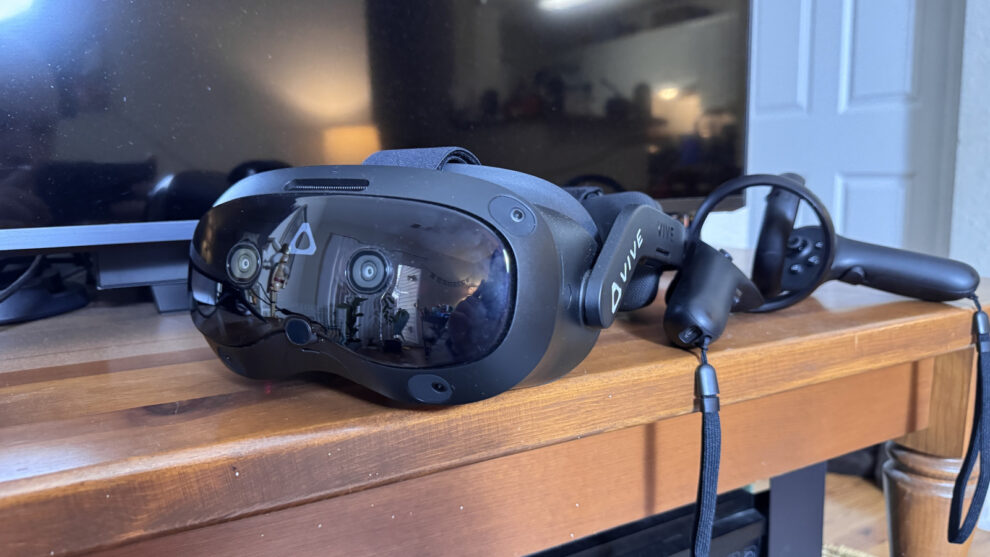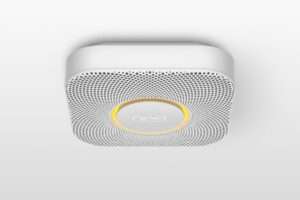HTC’s new Vive Focus Vision arrives with premium ambitions but dated hardware, leaving VR enthusiasts questioning its $999 price point. The latest addition to HTC’s high-end virtual reality lineup attempts to bridge the gap between standalone and PC-connected VR experiences, but stumbles due to its aging processor and mixed feature implementation.
HTC has long carved out its niche in the premium VR space, targeting enthusiasts and enterprise customers while Meta pursues the mainstream market. The Focus Vision represents HTC’s latest effort to maintain this position, combining elements from their business-focused Focus 3 and the goggle-style XR Elite. However, the headset’s reliance on 2020-era technology raises serious questions about its value proposition in late 2024.
At the heart of the Focus Vision’s challenges lies its processor choice. The headset employs the original Snapdragon XR2 chip, the same processor found in the Meta Quest 2 and HTC’s own Focus 3. This decision becomes particularly puzzling when considering that Meta’s Quest 3 and Quest 3S, priced at $500 and $300 respectively, utilize the significantly more powerful XR2 Gen 2 processor. The newer chip boasts 2.5 times faster processing and eight times more powerful AI capabilities, making the Focus Vision’s hardware seem decidedly last-generation.
Despite these limitations, the Focus Vision does shine in several areas. The headset boasts an impressive 2,448 by 2,448 pixels per eye resolution, surpassing the Quest 3’s 2,064 by 2,208 pixels. Its wider 120-degree field of view also offers enhanced immersion compared to the Quest 3’s 110 degrees. The device packs 12GB of RAM, exceeding the 8GB found in both the Focus 3 and Quest 3, though this advantage is somewhat diminished by the older processor.
Build quality and comfort represent clear wins for the Focus Vision. The headset features premium construction that, while still utilizing plastic materials, feels notably more refined than Meta’s offerings. The comfortable halo-style head strap and generous cushioning make extended VR sessions more bearable, while a flip-up visor design accommodates users wearing glasses. Perhaps most impressively, the Focus Vision introduces a hot-swappable battery system, with a removable power cell in the rear head strap acting as a counterweight to the front-heavy display.

The innovative battery solution includes a small built-in battery that maintains power during swaps, potentially enabling unlimited wireless VR sessions with enough spare batteries. This feature, while impressive, highlights HTC’s enterprise-focused design philosophy – it’s an expensive implementation that consumers might appreciate but rarely require, especially when compared to the simple solution of connecting a Quest 3 to a portable battery pack.
In practical use, the Focus Vision delivers a capable but unremarkable standalone VR experience. Popular demonstrations like Maestro and theBlu remain immersive, though the headset’s use of older Fresnel lenses results in noticeable artifacts and light bleeding compared to the newer pancake lenses found in the Quest 3. The Vive app store, while more populated than in previous years, still pales in comparison to Meta’s extensive Quest library and exclusive titles.
The headset’s newer features present a mixed bag. The 16MP color cameras enable mixed reality experiences but deliver a fuzzy view of the real world, similar to Meta’s implementations but far from the clarity offered by Apple’s Vision Pro. Eye tracking proved problematic during testing, failing to function properly even after multiple calibration attempts. The automatic interpupillary distance (IPD) adjustment system showed inconsistent performance, sometimes missing the mark entirely.
One bright spot is the Focus Vision’s capability to stream uncompressed PC VR content through an optional $149 DisplayPort streaming kit. This provides a superior visual experience compared to the compressed streaming offered by Quest headsets, but the additional cost pushes the total investment to nearly $1,150 – a difficult proposition when dedicated PC VR headsets like the Valve Index and Bigscreen Beyond offer potentially superior experiences.
Battery life clocks in at around one hour and 45 minutes of standalone use, falling short of Meta’s Quest offerings. While the hot-swappable battery system mitigates this limitation, it requires purchasing additional batteries and managing multiple power cells.
The Focus Vision occupies an increasingly narrow slice of the VR market, particularly following Meta’s discontinuation of the Quest Pro. While it offers decent standalone performance and capable PC VR connectivity, the dated processor, inconsistent feature implementation, and premium price point make it a tough sell for all but the most specific use cases. For businesses requiring hybrid standalone and PC VR capabilities or developers testing across multiple VR scenarios, the Focus Vision might fill a niche. However, for most users – even VR enthusiasts – the value proposition remains questionable when compared to more affordable and, in some ways, more capable alternatives.
















Add Comment